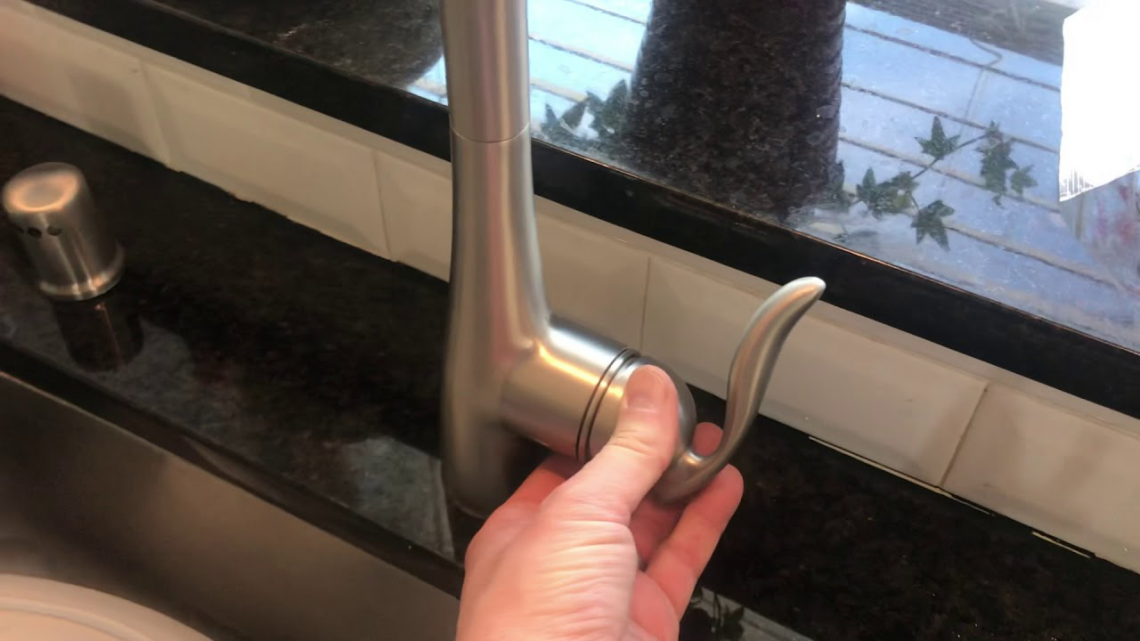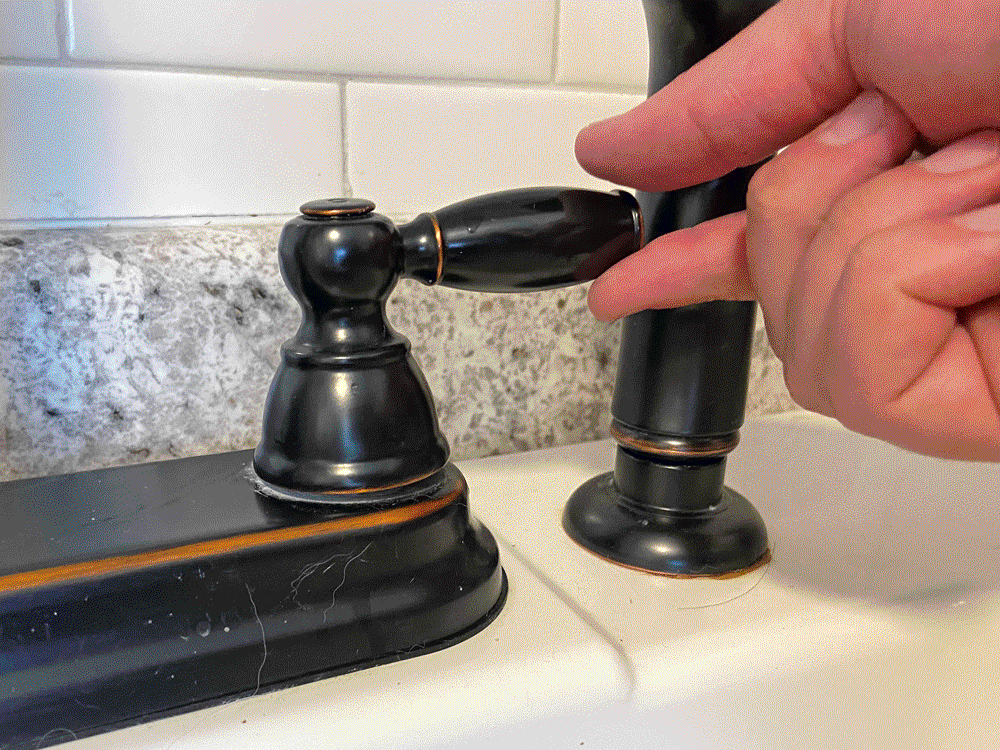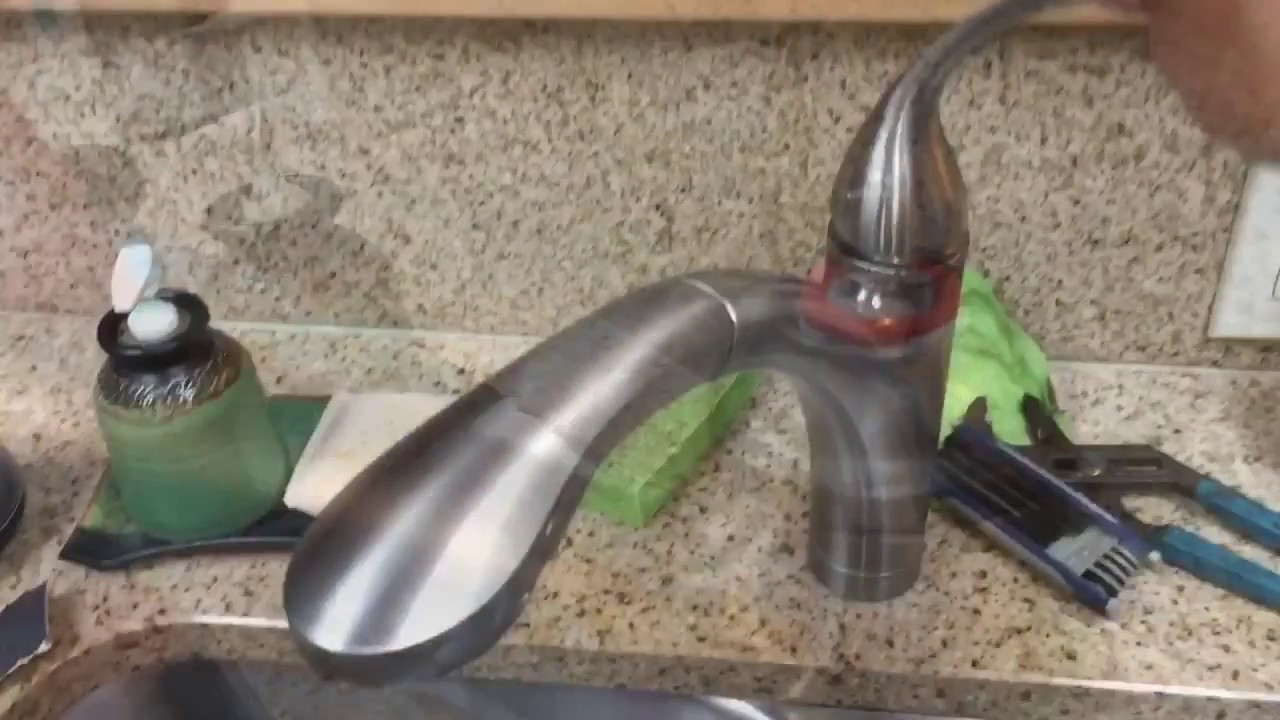If your kitchen sink faucet handle is becoming difficult to turn, it can be a frustrating and inconvenient problem. Not only does it make it harder to use your sink, but it can also be a sign of underlying issues with your faucet. In this article, we will discuss the top 10 ways to fix a kitchen sink faucet handle that's hard to turn.How to Fix a Kitchen Sink Faucet Handle That's Hard to Turn
Before we dive into the specific fixes, it's important to know the general steps for repairing a hard-to-turn faucet handle. First, you'll need to identify the cause of the problem. Then, you can take the necessary steps to address it, whether it's through lubrication, tightening, or replacement. Remember to always turn off the water supply before attempting any repairs.How to Repair a Hard-to-Turn Faucet
There are a few common reasons why your kitchen sink faucet handle may be hard to turn. These include mineral buildup, a worn-out cartridge, a loose handle, a damaged valve, or a faulty handle. Let's take a closer look at each of these causes and how to fix them.5 Common Causes of a Hard-to-Turn Faucet
Mineral buildup is a common cause of a hard-to-turn faucet handle. Over time, minerals from your water can accumulate and cause the handle to become stiff. To fix this, you can use a lubricant such as WD-40 or silicone spray. Simply spray the lubricant around the base of the handle and into the valve and then turn the handle back and forth to distribute it. This should make the handle easier to turn.How to Lubricate a Faucet Handle
If lubrication doesn't solve the problem, it may be time to replace the faucet handle. This is a relatively simple process and can be done by following the manufacturer's instructions. You'll need to purchase a replacement handle that is compatible with your faucet model. Once you have the new handle, you can remove the old one and install the new one according to the instructions.How to Replace a Faucet Handle
If your faucet handle is still difficult to turn after lubrication and replacement, you may need to troubleshoot further. This could involve checking for any loose parts or debris that may be hindering the movement of the handle. It may also require replacing the valve or cartridge if they are damaged or worn out.Troubleshooting a Hard-to-Turn Faucet
A loose faucet handle can also cause it to be hard to turn. To fix this, you can tighten the handle using a screwdriver or Allen wrench. Simply locate the screw or bolt that holds the handle in place and tighten it until the handle is secure. This should make it easier to turn.How to Tighten a Loose Faucet Handle
Over time, dirt, grime, and soap scum can build up on your faucet handle, making it difficult to turn. To clean it, you can use a mixture of warm water and dish soap. Dip a cloth into the solution and gently scrub the handle to remove any buildup. Rinse with clean water and dry with a towel. This should improve the handle's movement.How to Clean a Faucet Handle
If your faucet handle has an adjustable tension feature, you can use this to make it easier to turn. This is usually done by turning a screw or adjusting a knob located on the handle. Refer to the manufacturer's instructions for the specific steps to adjust the tension.How to Adjust a Faucet Handle
If your faucet has a cartridge instead of a valve, this may be the cause of the hard-to-turn handle. Over time, cartridges can become worn out or damaged. To replace it, you'll need to purchase a new one that is compatible with your faucet model. Then, follow the manufacturer's instructions to remove the old cartridge and install the new one. In conclusion, a hard-to-turn faucet handle can be caused by a variety of issues. By following these top 10 tips, you can easily fix the problem and have your kitchen sink functioning smoothly once again. Remember to always turn off the water supply before attempting any repairs and consult a professional if you are unsure or uncomfortable with making the repairs yourself.How to Replace a Cartridge in a Faucet Handle
Troubleshooting a Kitchen Sink Faucet Handle That's Hard to Turn

Is your kitchen sink faucet handle becoming increasingly difficult to turn? This common household issue can be a major inconvenience, making simple tasks like washing dishes or filling up a glass of water feel like a Herculean effort. Not to mention, a stiff faucet handle can also be a sign of underlying problems that could lead to costly repairs down the line. Here are some potential causes and solutions for a kitchen sink faucet handle that's hard to turn.

One possible reason for a stiff faucet handle is a buildup of mineral deposits. Over time, minerals from your water can accumulate and create a layer of gunk inside the faucet handle, making it harder to turn. To address this issue, try removing the handle and soaking it in a solution of vinegar and water. This will help break down the mineral deposits and make it easier to turn the handle.
Another cause of a stiff faucet handle could be a worn-out cartridge or valve. These are the parts inside the faucet handle that control the flow of water. If they become worn or damaged, they can make the handle harder to turn. In this case, you may need to replace the cartridge or valve. It's important to note that this can be a tricky and delicate task, so it may be best to call a professional plumber for assistance.
In some cases, the problem may not be with the faucet handle itself, but with the plumbing pipes. If there is a blockage or leak in the pipes, it can put added pressure on the faucet handle, making it harder to turn. If you suspect this may be the issue, it's important to address it as soon as possible to prevent further damage to your plumbing system.
Kitchen sink faucet handle hard to turn may seem like a minor issue, but it can actually be a sign of larger problems that require immediate attention. If you're experiencing a stiff faucet handle, it's important to troubleshoot and address the issue before it escalates into a more serious and costly problem. Regular maintenance and proper care of your plumbing fixtures can go a long way in preventing these types of issues.
In addition to addressing the underlying causes of a stiff faucet handle, there are also some preventative measures you can take to keep your kitchen sink faucet functioning smoothly. Regularly cleaning and maintaining your faucet can help prevent mineral buildup and other issues. Also, be mindful of how much force you are using when turning the handle and avoid using excessive force, as this can cause damage to the internal components.
In conclusion, a kitchen sink faucet handle that's hard to turn can be a frustrating and inconvenient problem, but it's important to address it promptly and properly. By understanding the potential causes and taking preventative measures, you can keep your kitchen sink faucet in good working condition and avoid the headache of a hard to turn handle in the future.














































































:max_bytes(150000):strip_icc()/cleaning-the-aerator-from-deposits--the-girl-hand-washes-a-dirty-limestone-aerator-with-water-1126244919-72868100964f42d5aa564a928371fea5.jpg)




























